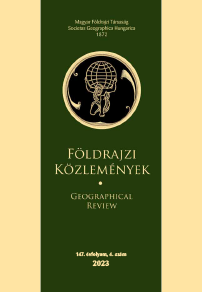The inhabited outskirts and urban sprawl: a legal and development policy shadow area
Abstract
Hungarian cities are administratively divided into three parts. In addition to the urban core, a significant population live in the outskirts and in former villages incorporated into our cities.
The accelerated suburban development has reshaped the development paths of these areas. Although only a small portion of the population of the agglomerations lives in these places, a significant portion of migration has been directed towards them in the case of our rural centres. Due to the affordability of plots and loose regulations, individuals who were displaced from cities or came from the periphery of the country have been more likely to relocate to these areas. At the same time, these zones have also been attractive to urban migrants during their lifestyle changes, as properties could be acquired at lower costs. We argue that the relevant regulations for real estate registration, land management, and construction, even after recent amendments, aim to preserve a form of land use that essentially only exists in traces, while hindering the daily lives of the population in these transformed areas. Through our analysis, we intend to demonstrate, by comparing existing literature and regulations, that the applicable laws are unable to achieve their objectives (strengthening population retention) and, in many cases, have counterproductive effects. Furthermore, certain formulas impede urban development interventions and make it difficult to harness their effects. These processes deserve greater attention because the affected outskirts contain green spaces that play a significant role in mitigating the adverse effects of urban sprawl, such as the heat island phenomenon.
Copyright (c) 2024 Gábor László Vasárus, Tamás Boros

This work is licensed under a Creative Commons Attribution-NonCommercial-NoDerivatives 4.0 International License.



